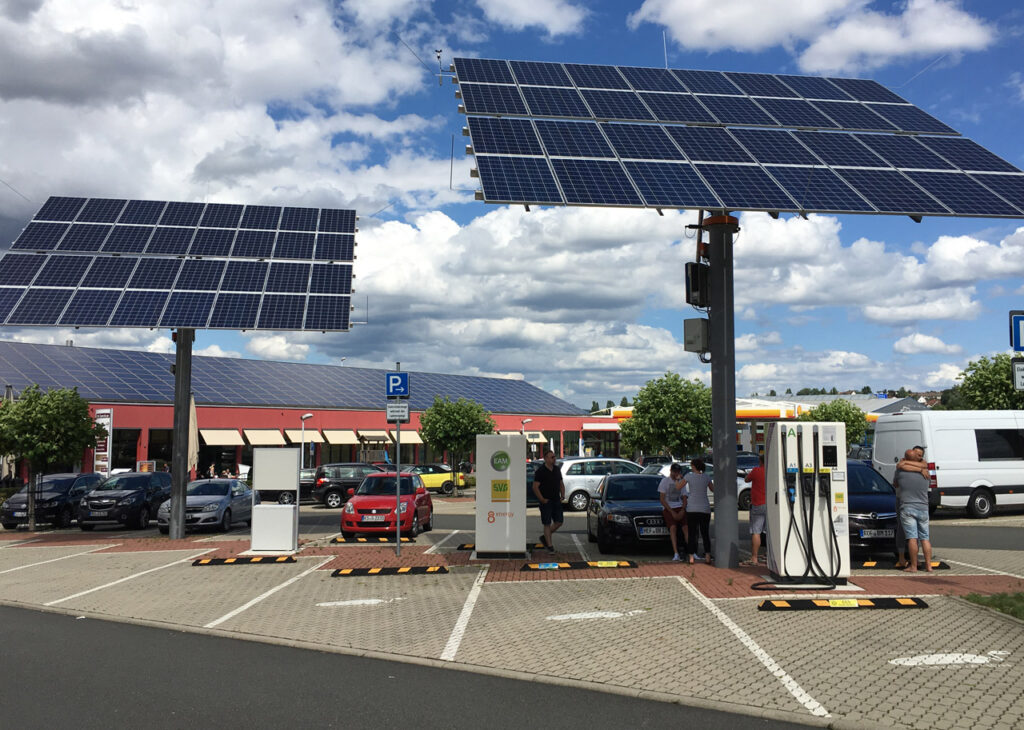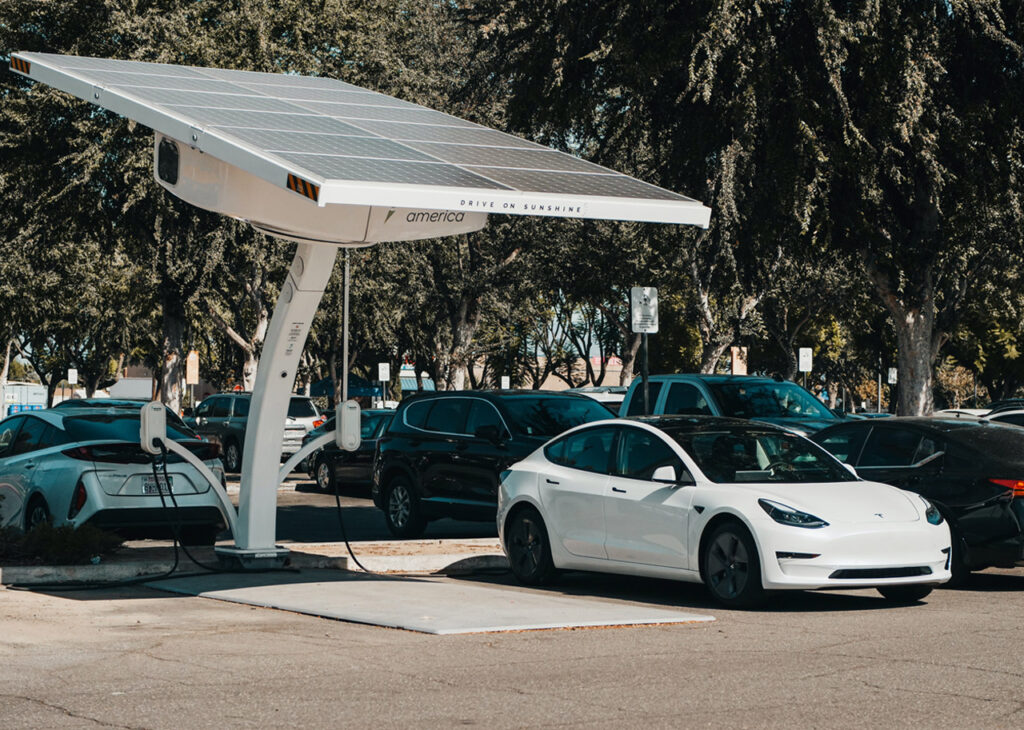
Many countries are aggressively pursuing electric vehicles (EVs) as one of the many ways of addressing climate change. The objective is to replace the more polluting internal combustion engine (ICE) with electric motor and battery–enabled vehicles that can reduce the carbon footprint associated with transportation. Technological innovations over the years, especially in battery technology, are driving the transition to EVs, though their adoption is still at a nascent stage. Major challenges include relatively high upfront costs, range anxiety, inadequate charging infrastructure, and considerable waiting time for recharging batteries. While upfront costs are expected to reduce in the coming years due to technological improvements and economies of scale, the planning of adequate charging infrastructure will require an initial push by the Government of India and the authorities concerned. It should be noted that the energy mix of the grid electricity driving the EVs also plays an important role in achieving green mobility.
Owing to their zero tailpipe emissions, EVs are expected to counter the harmful effects of emissions from fossil fuel–based vehicles. However, it is important to note that EVs are sustainable in the long run only if they run on a cleaner form of energy. Currently, the primary source of energy in the electrical grid is predominantly coal. EVs sourcing energy from renewables, therefore, represent green mobility in the true sense of the phrase. Solar rooftop photovoltaic (SRTPV) is a popular technology to source clean energy and can be easily scaled within cities. SRTPV systems offer a number of advantages in EV charging:
- They are easy to install because of their modular design.
- They are a cost-effective alternative to charging from the grid.
- They can help reduce the detrimental effects of a surge in EV charging demand on the grid.
Electric Vehicle Scenario in India:
The transport sector in India is largely dominated by two- and three-wheelers, jointly accounting for 83% of the total number of vehicles in the country. Two-wheelers are expected to lead the EV transition, given the advantages of affordability and ability to conduct short-distance trips with reduced range anxiety. Currently, both two- and three-wheelers lead the EV sales. The number of electric two-wheeler units sold in 2016–17 was 23,000, which increased by 138% to 54,800 units in 2017–18. This increase was despite a reduction in the sale of electric four-wheelers. IN 2022, India’s EV sales surpassed one million units for the first time, marking a record 206% year-on-year growth over 2021 EV sales numbers. With a total sales of 10,54,938 units of electric vehicles in 2022, India’s EV industry hit record sales year across all vehicle segments, accounting for 4.7% of overall automobile sales.
Though the EV sales figures have surpassed one million units, EV sales in India have been considerably lower compared to China, the European countries, and the USA.
In 2015, the Government of India released a scheme termed Faster Adoption and Manufacture of (Hybrid and) Electric Vehicles (FAME-INDIA) that aimed to promote the manufacture and adoption of EVs throughout the country. It was to be implemented in two phases. The first phase of the scheme began in April 2015 and ended in March 2019 with several extensions. The second phase of the scheme got rolling from 1 April 2019 and which was to ends on 31 March 2022 (Press Information Bureau, Government of India Cabinet, 2019) has been further extended till 2024. The main features of the scheme are as follows:
• A total investment of INR 10,000 crore has been earmarked to implement a number of measures.
• A demand-side subsidy of INR 10,000 per kWh of battery capacity is to be provided on certain EV sales. Buses can avail up to INR 20,000 per kWh of their battery capacity.
• The mentioned subsidy is only applicable to two-wheelers, four-wheelers, and buses used for passenger transport or registered for commercial purposes.
• To be eligible for the subsidy, EVs should have a certain percentage of components manufactured within India.
In addition, the government also launched a National E-Mobility Programme in 2018 under which the Energy Efficiency Services Limited will focus on setting up public charging infrastructure as well as demand creation of EVs.
Similarly various state governments in Karanataka, Maharashtra, Gujarat, Delhi, AP etc have come up with policies supporting EV adoption and for setting up of Charging Stations to address concerns related to range anxiety.
Along with the challenge of range anxiety another challenge that needs to be tackled is with greater EV penetration, one can expect increased utilisation of grid electricity for charging. To accommodate increasing loads in the future, the existing grid may need an upgrade. Several studies have shown that localised and concerted charging behaviour can severely affect grid stability even at low EV adoption. Using renewable energy such as solar and wind can potentially reduce peak demand because of the collective charging behaviour of EV owners. Electricity generated using sunlight not only is renewable but also entails no pollutants or greenhouse gases during operation. Solar energy generated locally, such as from Solar Rooftop System, can be directed towards vehicle charging.
EV Charging Infrastructure:
The Department of Heavy Industries (DHI) released guidelines for setting up public electric vehicle charging stations (EVCS) across India in 2018. Salient features of the guidelines include specifications on the necessary electrical equipment, the type of chargers, and the provision to facilitate online booking of the charging slots to EV owners. A public EV charging station today typically consists of, apart from the charging equipment, a data collection and processing facility (often provided by a third-party network service provider) and a mobile application to provide online booking as well as payment options to EV owners. The current mandated requirements for the public charging infrastructure provide a certain level of convenience to EV owners. The main components of the planned public EV charging business are shown schematically in Figure 1.
Following are the main entities involved in a charging infrastructure
- EV charging service providers are companies that provide charging services to EV owners. They set up and maintain a number of charging stations. An EV charging network is a company that consolidates different charging service providers on a common platform where end-users can find information in one place. Some of the charging networks coming up in the country are Tata Power, Energy Efficiency Services Limited, Magenta Power, and Fortum
- Charge point operators (CPOs) are companies that operate a set of EV chargers. A number of services mainly related to data such as charger bookings and online payments are managed by the CPOs.
- Electric vehicle supply equipment (EVSE) original equipment manufacturers (OEMs) are manufacturers of chargers and related equipment. Delta Electronics, ABB, Siemens, and Mass Tech are some of the companies operating in India. EVSE is defined by the DHI as follows: “it includes the electrical equipment external to the electric vehicle that provides a connection for an electric vehicle to a power source for charging and also is equipped with advanced features like smart metering, cellular capability, and network capability.”
- DISCOMs are electricity distribution companies that are responsible for setting up and maintaining electricity distribution networks to enable the uninterrupted supply of power to end-users. EV owners are their new customers.

Motivation for Solar-Based EV Charging:
Air pollution is a major health hazard. Alarmingly, India has 21 of the 30 most air-polluted cities in the world (Regan, 2020). The transport sector in Indian cities is a major contributor to air pollution (contributes 40%–80%)—in the form of CO2, NOx, and particulate matter. Hence, decarbonising the transport sector with the deployment of EVs is an important step towards the mitigation of air pollution. However, though EVs achieve zero tailpipe emissions, a cleaner mode of transport is realised only when they run on an eco-friendly source of energy: the renewables. As EVs will almost always be charged from an electrical grid, the renewable energy mix of the latter becomes important. The Indian electrical grid is currently dominated by coal, and it is the primary source of energy. However, recent analyses involving the life-cycle analysis of passenger cars in India have shown that even with the current Indian grid, battery EVs exhibit 19% – 34% lower emissions over their lifetime compared to their gasoline counterparts. The decarbonisation of the power sector needs to go hand-in-hand with vehicle electrification plans in the country.
India is endowed with vast solar energy potential. About 5,000 trillion kWh per year energy is incident over India’s land area with most parts receiving 4-7 kWh per sq. m per day. National Institute of Solar Energy has assessed the Country’s solar potential of about 748 GW assuming 3% of the waste land area to be covered by Solar PV modules. Solar energy has taken a central place in India’s National Action Plan on Climate Change with National Solar Mission as one of the key Missions.
National Solar Mission (NSM) was launched on 11th January, 2010. NSM is a major initiative of the Government of India with active participation from States to promote ecological sustainable growth while addressing India’s energy security challenges. The Mission’s objective is to establish India as a global leader in solar energy by creating the policy conditions for solar technology diffusion across the country as quickly as possible. The Mission targets installing 100 GW grid-connected solar power plants by the year 2022.
India stands 4th globally in Renewable Energy Installed Capacity (including Large Hydro), 4th in Wind Power capacity & 4th in Solar Power capacity (as per REN21 Renewables 2022 Global Status Report). The country has set an enhanced target at the COP26 of 500 GW of non-fossil fuel-based energy by 2030. The installed solar energy capacity has increased by 24.4 times in the last 9 years and stands at 63.3 GW as of Feb 2023. The installed Renewable energy capacity (including large hydro) has seen an increase of around 128 % since 2014.
Looking at the ambitious targets set by the government for achieving net-zero by 2070 and energy independence by 2047. The transport sector has a very crucial role to play in achieving these targets. Decarbonising the transport sector is the topmost priority of the government in India. In this regards, EVs are going to play a significant role and Solar based EV Charging stations are crucial cog in the wheel for Achieving Greener and Sustainable Mode of Transportation.
